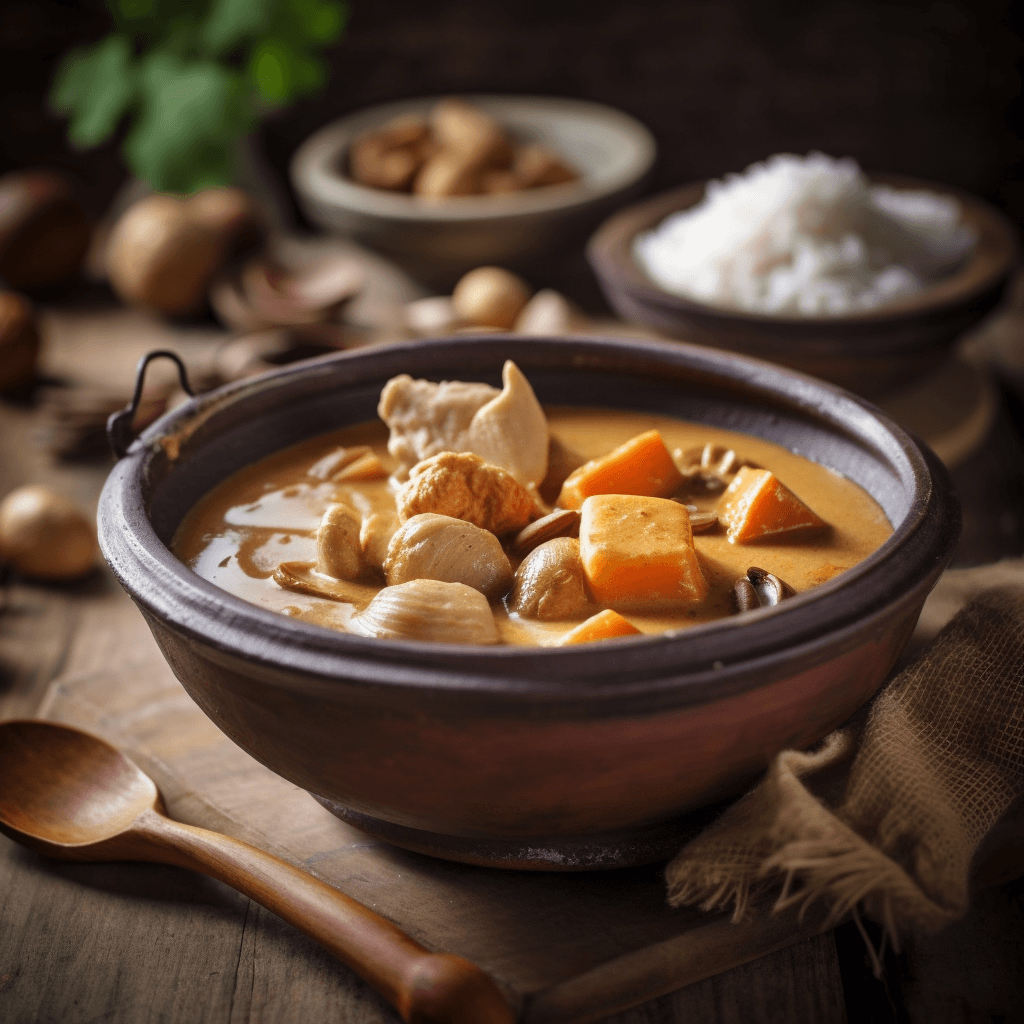
Massaman curry, a true culinary delight, has captured the hearts and taste buds of food enthusiasts around the world. Its rich, hearty flavor is the result of an extraordinary fusion of cultures and ingredients that have come together to create a dish that is both historically fascinating and utterly delicious. Journey with us as we uncover the enchanting history of this Thai favorite and explore the various influences that have shaped its creation.
The Origins: A Melting Pot of Cultures
To understand the origins of Massaman curry, we must first travel back to the 17th century. At that time, the Kingdom of Ayutthaya, in present-day Thailand, was a thriving hub of trade and commerce. The strategic location of the kingdom allowed for interactions with various cultures, resulting in a vibrant exchange of ideas, goods, and flavors.
During this period, the region saw an influx of Persian and Middle Eastern merchants who brought with them exotic spices, flavors, and culinary techniques. These traders introduced ingredients such as cinnamon, cloves, and cardamom, which were then combined with local Thai flavors to create a unique and enticing dish. The Massaman curry was born.
The Name: Tracing the Origins
The name "Massaman" is believed to have originated from the Malay word "masam," which means sour, and the Persian word "Mussulman," which refers to a Muslim person. Some historians argue that the dish's name is derived from the term "Mussulman curry," signifying the Muslim origin of the curry. This theory is further supported by the fact that the dish is often made with halal meat to adhere to Islamic dietary laws.
The Recipe: A Symphony of Flavors
Massaman curry is characterized by its rich, thick sauce, which is a blend of both sweet and savory flavors. The base of the curry is made from a mix of spices, including cinnamon, cloves, cumin, cardamom, and nutmeg, which are ground together with other ingredients such as garlic, shallots, and chilies to form a fragrant paste.
The paste is then cooked with coconut milk, giving the curry its distinctive creamy texture. Meat, such as chicken, beef, or lamb, is then added and simmered until tender. Traditionally, the dish is also cooked with potatoes, onions, and peanuts, which provide a delightful contrast in both texture and flavor.
Tamarind paste, another key ingredient in Massaman curry, is responsible for the dish's signature tanginess. This tartness is further enhanced by the addition of palm sugar, which contributes to the curry's characteristic sweetness. The delicate balance of flavors is a testament to the exceptional culinary skills of the Thai people, who have mastered the art of blending diverse ingredients to create harmonious and memorable dishes.
The Legacy: Massaman Curry Today
Over the centuries, Massaman curry has continued to evolve, with each new generation adding their unique touch to the dish. Today, it is enjoyed by people all over the world, who relish its rich flavors and intriguing history. The dish has even been ranked as one of the world's most delicious foods in various polls and culinary lists, highlighting its enduring popularity.
In conclusion, the enchanting history of Massaman curry is a fascinating tale of cultural exchange and culinary innovation. This dish stands as a testament to the enduring appeal of Thai cuisine and its ability to captivate the palates of food lovers across the globe. So, the next time you enjoy a bowl of this delicious curry, remember the rich history and diverse influences that have come together to create this exceptional dish.